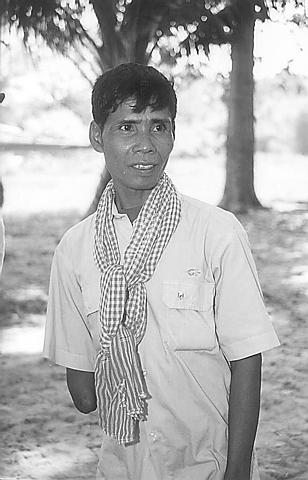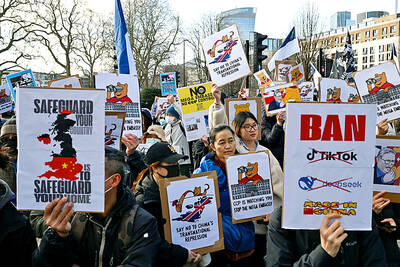-- Larry Barnett, former US Marine and survivor of the second of three US helicopters shot down over Koh Tang on May 15, 1975.
At the pre-dawn briefing for the US Marines detailed to conduct the rescue attempt of the Mayaguez crew, the planned operation seemed deceptively straightforward.
"Our group's mission was to land on the beach, link up with the other groups and move toward the middle of the island [where] we were to link up and surround a compound believed to hold the captured Mayaguez crew," explained Dale L. Clark, a Marine fire team leader during the Koh Tang assault. "My group had two US Army interpreters that spoke fluent Cambodian [who] were equipped with bullhorns and tasked with influencing [the Khmer Rouge] in giving up the crew without a fight."
Instead, what ensued was a near-textbook exemplar of a military disaster: inexperienced troops with inaccurate intelligence pitted against a seasoned enemy on its home turf.

"Very few of our company had any previous combat experience ... lots of the guys were fresh out of boot-camp or like myself had just been in about a year," recalled Koh Tang survivor Larry Barnett.? "I guess a fair general term to describe our company was `greenhorns.'"
As they skimmed over the Pacific toward their fateful encounter with the Khmer Rouge on Koh Tang, the Marines were comforted by military intelligence reports of the light resistance, if any, they would encounter upon arrival.????
"We were told to expect the operation to be easy and with a quick withdrawal," Clark said.? "We were told not to `lock and load' our weapons until told to do so because combat was not expected."
Clark admits to going into "mild shock" by the intensity of the KR resistance to the Marine landing on Koh Tang.
"I could not believe what I saw ... the KR opened up on the first four helicopters that attempted to land.?I saw an aircraft gun emplacement near the edge of the island.? I also saw a lot of smoke coming from a tree line we flew over ... from rifles being fired at the helicopters.? I remember hugging the bottom of the helicopter as we began evasive maneuvers to get out of the kill zone.? I looked up and saw fuel spraying all over the inside of the front of the helicopter.? I could not believe what I was seeing."
Both Clark and Barnett describe themselves and their fellow Marines as victims of?a severe failure of military intelligence regarding the strength of the force facing them on Koh Tang.
"Being told not to expect resistance and having the opposite experience ... tells me it was an intelligence disaster," he said.
Barnett is even more explicit in where to lay blame for what befell the Koh Tang operation.
"The intelligence that [the US military] had on the island was good ... but it did not make its way into the proper hands," Barnett explained.? "Our company commander and company gunnery sergeant received a photo of the island's gun emplacements and bunkers the night before [the assault] ... but elected not to tell the troops for fear of making us more nervous than we already were."
Surprise and dismay over the events of May 15, 1975 were shared by Mao Run, platoon commander of the KR forces on Koh Tang.? Dispatched to the island the week before in advance of an expected Vietnamese invasion, a landing by US Marines was the last thing on his mind.
"I met those men [from the Mayageuz] and we were friendly and kind to them ... I had no idea they would be the cause of fighting between Cambodia and America," the disabled veteran explained from his rural village in southern Cambodia.? "I think the Americans attacked us out of revenge because they had lost the war and they used [the Mayageuz Incident] as an excuse."
While post-battle American estimates of the size of the KR force on Koh Tang range as high as 200 men, Run insists there were no more than forty fighters on the island during the operation.
"We had 40 men, but only 20 men took part in most of the fighting," he said.? "But those American troops were not professionals like the Khmer Rouge ... they spoke loudly, laughed and smoked so it was easy to monitor their movements."
In the air above Run and his fellow KR defenders, American planes and AC-130 Specter gunships subjected their positions to withering cover fire that continued uninterrupted throughout the operation.
At the height of the fighting the KR positions were targeted with a 15,000 pound BLU-82 cluster bomb, at the time the biggest non-nuclear weapon in the US arsenal, carving out a huge crater still clearly visible on the island 25 years later.
"We lost six men on the island, and another ten when their boats were sunk when approaching Koh Tang," Run recalled.?"But many, many more people were killed by bombs in [Sihanoukville].
While Clark and Barnett both express interest in someday meeting with Run and his fellow Koh Tang defenders in an effort "to bring closure" to the painful lingering memories of the battle, Run makes it clear that any such reunion is unlikely.
"[Koh Tang] was just like a training exercise ... the real battle and the real victory was the liberation of Phnom Penh on April 17," he said.? "People say now that the Khmer Rouge killed one million people [between 1975-1979] but another million people must have been killed by American B-52 attacks on Cambodia ... I saw whole villages destroyed by B-52s and I'll never forget that."

‘SHORTSIGHTED’: Using aid as leverage is punitive, would not be regarded well among Pacific Island nations and would further open the door for China, an academic said New Zealand has suspended millions of dollars in budget funding to the Cook Islands, it said yesterday, as the relationship between the two constitutionally linked countries continues to deteriorate amid the island group’s deepening ties with China. A spokesperson for New Zealand Minister of Foreign Affairs Winston Peters said in a statement that New Zealand early this month decided to suspend payment of NZ$18.2 million (US$11 million) in core sector support funding for this year and next year as it “relies on a high trust bilateral relationship.” New Zealand and Australia have become increasingly cautious about China’s growing presence in the Pacific

Indonesia’s Mount Lewotobi Laki-Laki yesterday erupted again with giant ash and smoke plumes after forcing evacuations of villages and flight cancelations, including to and from the resort island of Bali. Several eruptions sent ash up to 5km into the sky on Tuesday evening to yesterday afternoon. An eruption on Tuesday afternoon sent thick, gray clouds 10km into the sky that expanded into a mushroom-shaped ash cloud visible as much as 150km kilometers away. The eruption alert was raised on Tuesday to the highest level and the danger zone where people are recommended to leave was expanded to 8km from the crater. Officers also

The team behind the long-awaited Vera Rubin Observatory in Chile yesterday published their first images, revealing breathtaking views of star-forming regions as well as distant galaxies. More than two decades in the making, the giant US-funded telescope sits perched at the summit of Cerro Pachon in central Chile, where dark skies and dry air provide ideal conditions for observing the cosmos. One of the debut images is a composite of 678 exposures taken over just seven hours, capturing the Trifid Nebula and the Lagoon Nebula — both several thousand light-years from Earth — glowing in vivid pinks against orange-red backdrops. The new image

ESPIONAGE: The British government’s decision on the proposed embassy hinges on the security of underground data cables, a former diplomat has said A US intervention over China’s proposed new embassy in London has thrown a potential resolution “up in the air,” campaigners have said, amid concerns over the site’s proximity to a sensitive hub of critical communication cables. The furor over a new “super-embassy” on the edge of London’s financial district was reignited last week when the White House said it was “deeply concerned” over potential Chinese access to “the sensitive communications of one of our closest allies.” The Dutch parliament has also raised concerns about Beijing’s ideal location of Royal Mint Court, on the edge of the City of London, which has so